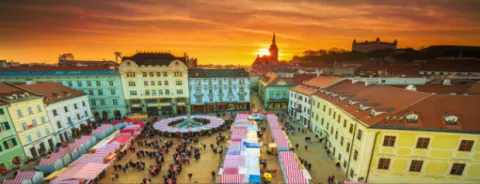
The Slovak capital of Bratislava has already introduced a slew of smart technology pilot projects such as solar benches that charge mobile phones and offer Wi-Fi, but despite all of its smart city advances, Bratislava still falls behind the other capitals in the Visegrad Group (V4) region. According to the Business School of the University of Navarra’s IESE Cities in 2017 Motion Index, which measures the sustainability and quality of life in 180 major cities in 80 countries, Bratislava ranks 77th while central European cities like Vienna come in at 15th and Budapest steps in at 67th. Bratislava sits just a 70-minute boat ride away from Vienna and a little over two hours from Budapest, and while numbers may show that Slovakia’s capital is not up to speed with its neighbours just yet, a few projects underway are about to change that. Below, we’ll take a look at just one of the projects proving Bratislava has what it takes to be a smart city leader in the V4 region.- Bruno De Man
Sophisticated building solutions
After the Second World War, Bratislava’s population quickly grew and the city responded to the high demand for affordable housing with low quality, prefabricated concrete buildings that were poorly insulated and costly in terms of energy. The capital city is now looking to improve energy efficiency with a pilot project revolving around nearly zero energy building renovation models. Not only does the city want to reduce energy consumption, it wants to build a sustainable environment in which buildings are interconnected with public space, green areas and sustainable mobility, such as mass public transport.
As the only eastern European city to take part in the EU-GUGLE project (European cities serving as a Green Urban Gate towards Leadership in Sustainable Energy), Bratislava hopes that with the five-year project—which aims to have ultra-low energy or almost zero standard apartment units by 2020—other cities across the country will be inspired and replicate similar smart solutions. The project will hone in on 19 buildings in two of Bratislava’s five districts located in the wider city centre and western part of the city. By introducing a mix of renovation and retrofitting measures such as triple-glazed windows, thermal protection of peripheral constructions and renewable energy sources in district heating systems, the city aims to reduce energy consumption by at least 60 to 75 percent, in addition to making the environment a more liveable one for its residents that serves as an example that will hopefully spread to other spots across Slovakia.



